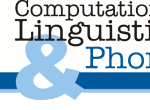

|
overview calendar readings |
Literatur (Auswahl)
Arnold, J. E., Fagnano, M., and Tanenhaus, M. K. (2003). Disfluencies signal thee, um, new information. Journal of Psycholinguistic Research, 32(1), 25-36.
Arnold, J. E., Kam, C. L. H., and Tanenhaus, M. K. (2007). If you say thee uh you are describing something hard: the on-line attribution of disfluency during reference comprehension. Journal of Experimental Psychology. Learning, Memory, and Cognition, 33(5), 914-930. https://doi.org/10.1037/0278-7393.33.5.914
Arnold, J. E., and Tanenhaus, M. K. (2011). Disfluency effects in comprehension: How new information can become accessible. The Processing and Acquisition of Reference, 197-217. https://doi.org/10.7551/mitpress/9780262015127.001.0001
Bosker, H. R. (2014). Research Note: The processing and evaluation of fluency in native and non-native speech, (i), 1-18.
Bosker, H. R., Quene, H., Sanders, T., and de Jong, N. H. (2014). Native 'um's elicit prediction of low-frequency referents, but non-native 'um's do not. Journal of Memory and Language, 75, 104-116. https://doi.org/10.1016/j.jml.2014.05.004
Bosker, H. R., Tjiong, J., Quene, H., Sanders, T. J. M., and De Jong, N. H. (2015). Both native and non-native disfluencies trigger listeners' attention. Proceedings of Disfluency in Spontaneous Speech 2015, 1-4.
Collard, P., Corley, M., and MacGregor, L. J. (2008). Attention orienting effects of hesitations in speech: Evidence from ERP's. Attention Orienting Effects of Hesitations in Speech: Evidence from ERP's, 1-25. https://doi.org/10.1017/CBO9781107415324.004
Cook, S. W., Jaeger, T. F., and Tanenhaus, M. K. (2009). Producing Less Preferred Structures: More Gestures , Less Fluency. Proceedings of the Anual Meeting of the Cognitive Science Society, 31.
Corley, M., MacGregor, L. J., and Donaldson, D. I. (2007). It's the way that you, er, say it: Hesitations in speech affect language comprehension. Cognition, 105(3), 658-668. https://doi.org/10.1016/j.cognition.2006.10.010
Corley, M., and Stewart, O. W. (2008). Hestitation disfluencies in spontaneous speech: The meaning of \emph{um}. Language and Linguistics Compass, 2(4), 589-602.
Drake, E., and Corley, M. (2015). Articulatory Imaging Implicates Prediction During Spoken Language Comprehension. Memory and Cognition, 43(8), 1-39. https://doi.org/10.3758/s13421-015-0530-6
Engelhardt, P. E., Corley, M., Nigg, J. T., and Ferreira, F. (2010). The role of inhibition in the production of disfluencies. Memory and Cognition, 38(5), 617-628. https://doi.org/10.3758/MC.38.5.617
Engelhardt, P. E., Ferreira, F., and Nigg, J. T. (2011). Language production strategies and disfluencies in multi-clause network descriptions: A study of adult attention-deficit/hyperactivity disorder. Neuropsychology, 25(4), 442-453. https://doi.org/10.1037/a0022436
Finlayson, I. R., Lickley, R. J., and Corley, M. (2010). The influence of articulation rate, and the disfluency of others, on one's own speech. Proceedings of DiSS-LPSS Joint Workshop, (September), 4-7.
Heller, D., Arnold, J. E., Klein, N., and Tanenhaus, M. K. (2015). Inferring Difficulty: Flexibility in the Real-time Processing of Disfluency. Language and Speech, 58(2), 190-203. https://doi.org/10.1177/0023830914528107
Heller, D., and Chambers, C. G. (2014). Would a blue kite by any other name be just as blue? Effects of descriptive choices on subsequent referential behavior. Journal of Memory and Language, 70(1), 53-67. https://doi.org/10.1016/j.jml.2013.09.008
Heller, D., Parisien, C., and Stevenson, S. (2016). Perspective-taking behavior as the probabilistic weighing of multiple domains. Cognition, 149, 104-120. https://doi.org/10.1016/j.cognition.2015.12.008
Kaland, C., Swerts, M., and Krahmer, E. (2013). Accounting for the listener: comparing the production of contrastive intonation in typically-developing speakers and speakers with autism. The Journal of the Acoustical Society of America, 134(3), 2182-2196. https://doi.org/10.1121/1.4816544
Kao, J. T., Wu, J. Y., Bergen, L., and Goodman, N. D. (2014). Nonliteral understanding of number words. Proceedings of the National Academy of Sciences, 111(33), 12002-12007. https://doi.org/10.1073/pnas.1407479111
Lowder, M. W., and Ferreira, F. (2016). Prediction in the Processing of Repair Disfluencies: Evidence From the Visual-World Paradigm. Journal of Experimental Psychology: LMC, (FEBRUARY). https://doi.org/10.1037/xlm0000256
Loy, J. E., Rohde, H., and Corley, M. (2016). Lying , in a manner of speaking. Proceedings of the 8th International Conference on Speech Prosody (SP2016), 984-988. https://doi.org/10.21437/SpeechProsody.2016-202
Loy, J. E., Rohde, H., and Corley, M. (2016). Lying , in a manner of speaking. Proceedings of the 8th International Conference on Speech Prosody (SP2016), 984-988. https://doi.org/10.21437/SpeechProsody.2016-202
MacGregor, L. J., Corley, M., and Donaldson, D. I. (2009). Not all disfluencies are are equal: The effects of disfluent repetitions on language comprehension. Brain and Language, 111(1), 36-45. https://doi.org/10.1016/j.bandl.2009.07.003
MacGregor, L. J., Corley, M., and Donaldson, D. I. (2010). Listening to the sound of silence: Disfluent silent pauses in speech have consequences for listeners. Neuropsychologia, 48(14), 3982-3992. https://doi.org/10.1016/j.neuropsychologia.2010.09.024
Maxfield, N. D., Lyon, J. M., and Silliman, E. R. (2009). Disfluencies along the garden path: Brain electrophysiological evidence of disrupted sentence processing. Brain and Language, 111(2), 86–100. https://doi.org/10.1016/j.bandl.2009.08.003
Pinget, A. F., Bosker, H. R., Quené, H., and de Jong, N. H. (2014). Native speakers’ perceptions of fluency and accent in L2 speech. Language Testing, 31(3), 349-365. https://doi.org/10.1177/0265532214526177
Rosa, E. C., and Arnold, J. E. (2017). Predictability affects production: Thematic roles can affect reference form selection. Journal of Memory and Language, 94, 43-60. https://doi.org/10.1016/j.jml.2016.07.007
Schachter, S., Christenfeld, N., Ravina, B., and Bilous, F. (1991). Speech disfluency and the structure of knowledge. Journal of Personality and Social Psychology, 60(3), 362-367. https://doi.org/10.1037/0022-3514.60.3.362